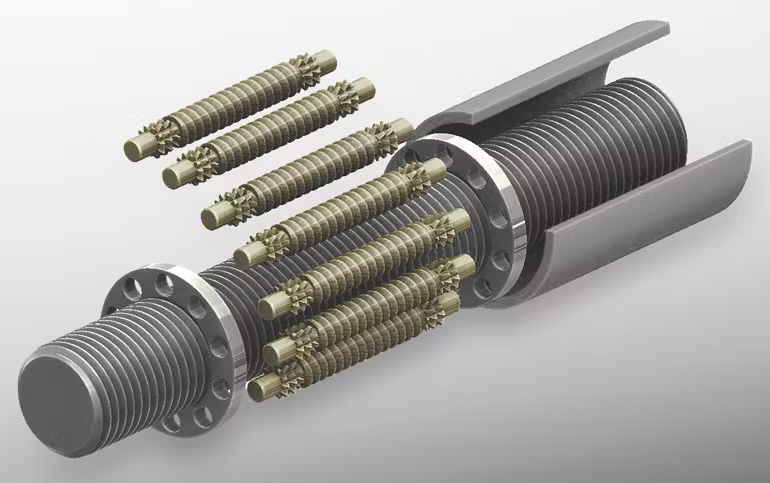1.1 Linear Screws
1.1.1 Definition
Linear screws are critical components in mechanical manufacturing, primarily used to convert axial forces in machinery. They offer high positioning accuracy and load-bearing capacity, making them core components in many engineering systems. In recent years, linear motion screw technology has seen widespread application across various industries, especially in automotive manufacturing, aerospace, and precision instruments.
?
1.1.2 Classification
?Operating Principle: Using mechanical friction transmission, they transmit motion through friction between contact surfaces.
? Characteristics: Simple structure, low cost.
? Application: Suitable for most mechanical systems, but regular maintenance is required to prevent wear and dirt accumulation.
?
2. Rolling Screws
? Operating Principle: They utilize rolling friction to transmit rotary motion into linear motion.
?
? Characteristics:
? ? ? ? a. Suitable for small power and precision machinery.
? ? ? ? b. Simple components and easy to install.
? ? ? ? c. Adjustable friction force.
? Applications: Used in small devices such as motors and engines.
?
Roller Ball Screw:
? Characteristics:
? ? ? ? a. Suitable for high-power applications, such as automotive gearboxes.
? ? ? ? b. Heavier components, more complex structure.
? ? ? ? c. Stable sliding friction.
? Applications: Used in automotive and mechanical transmission systems.
?
?
Hydrostatic Ball Screws
? Operating Principle: They transmit motion using static air pressure, balanced by wheels and springs, without relying on or rolling friction.
? Characteristics: No wear issues, long service life.
? Application: Suitable for applications requiring high precision positioning, such as air conditioning systems.
?
1.2.1 Definition
Linear guides, also known as slide rails, linear rails, or linear sliding guides in industrial applications, are key components used in linear reciprocating motion. Typically made from metal or other specialized materials, these guides feature a grooved or ribbed structure. Their primary function is to support, fix, and guide moving devices or equipment, significantly reducing friction during operation.
?
1.2.2 Classification
1. By Cross-Section Shape
?T-Shape Rail: Commonly used in general mechanical transmission, known for its high strength and ease of installation.
? L-shaped (or Triangular) Rail: Suitable for simple mechanical transmission in horizontal or vertical directions.
? U-shaped rail: Suitable for applications requiring higher resistance to thrust and rigidity.
? O-Shape Rail: Suitable for applications requiring larger installation space and protective measures.
? Hollow Rail: Saves material, suitable for light loads or special processing requirements.
?
Common rail cross-section shapes are shown below:
?
2. By Processing Method
? Machined Rails: Manufactured through traditional machining processes, offering lower cost but dependent on machining accuracy.
? Cold-Drawn Rails: Produced by cold-drawing forging, suitable for high precision and resistance to thrust applications.
?
3. By Application Field
? General Mechanical Transmission Rails: Such as those used in automobiles, motorcycles, etc.
? Special Purpose Rails: Used in applications such as aerospace and high-precision instruments.




